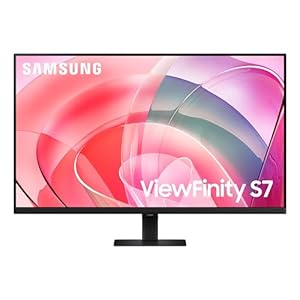In 1950, Enrico Fermi raised an innocuous however deeply unsettling query: in a galaxy full of planets and star methods, why don’t we see every other indicators of life? The query—now often called Fermi’s Paradox—has engaged astronomers, philosophers, and everybody in between for the intervening a long time. Now, a workforce of researchers suggests a brand new motive we could not have seen clever life in our universe.
Their resolution, published in The Astrophysical Journal, is simple: Extraterrestrial life could not must be doing all that. The researchers explored whether or not a next-generation house telescope may spot photo voltaic panels on a close-by exoplanet. The workforce concluded that, ought to such clever life exist and get its energy via photo voltaic vitality, it in all probability doesn’t require the quantity of vitality obligatory for us to identify it.
“The implication is that civilizations could not really feel compelled to broaden all around the galaxy as a result of they could obtain sustainable inhabitants and energy-usage ranges even when they select a really excessive lifestyle,” stated Ravi Kopparapu, a researcher at NASA’s Goddard Area Flight Heart and the paper’s lead creator, in a Goddard release. “They could broaden inside their very own stellar system, and even inside close by star methods, however galaxy-spanning civilizations could not exist.”
Within the paper, the researchers discover whether or not silicon-based photo voltaic panels may very well be detected on an Earth-like exoplanet. They selected silicon-based panels as a result of the component is extra plentiful than different components used for photo voltaic vitality, and (not less than on Earth) is comparatively low cost to mine and use in manufacturing.
The workforce imagined they have been observing the Milky Manner’s exoplanets with the Habitable Worlds Observatory, the marquee undertaking of NASA’s Nice Observatories program. The primary section of growth on the next-generation exoplanet-focused telescope is slated for 2029.
The workforce modeled an Earth-like planet with completely different ranges of silicon photo voltaic panel protection and examined whether or not the Liveable Worlds Observatory may detect these indicators of expertise from a distance of 30 light-years. The workforce discovered it could take not less than a number of hundred hours to detect the technosignatures, if 23% of that exoplanet’s land have been coated in photo voltaic panels.
The workforce notes that solely 9% of land protection on Earth could be essential to maintain 30 billion people at a excessive lifestyle. Almost 1 / 4 a planet’s land being coated in photo voltaic panels is, maybe clearly, an excessive state of affairs and could be superfluous to vitality necessities on Earth.
“Massive-scale stellar-energy harvesting constructions could particularly be out of date when contemplating technological advances,” stated research co-author Vincent Kofman, a researcher at NASA Goddard and American College, in the identical launch. “Absolutely a society that may place huge constructions in house would be capable to entry nuclear fusion or different space-efficient strategies of producing energy.”
The research assumes an extraterrestrial civilization would make use of photo voltaic vitality from its host star; in fact, aliens would possibly use any variety of energy sources, together with these past the boundaries of our creativeness.
However, particular energy supply apart, we could not see indicators of clever life within the universe as a result of house is large, and we’ve solely had the instruments to look—actually look—for a couple of a long time, or a century at a push. Our galaxy has been round for billions of years, and our universe for billions extra. As pointed out by the SETI Institute, “the Fermi Paradox is a really massive extrapolation from a really native commentary. You would possibly simply as properly look out your window and conclude that bears, as a species, couldn’t presumably exist since you don’t see any.”
The current research makes numerous assumptions about alien expertise and its visibility, however modeling these situations is vital; as soon as the Liveable Worlds Observatory and different next-generation telescopes are in operation, the initiatives may have a number of premises with which to start out their search.
Trending Merchandise

SAMSUNG FT45 Series 24-Inch FHD 1080p Computer Monitor, 75Hz, IPS Panel, HDMI, DisplayPort, USB Hub, Height Adjustable Stand, 3 Yr WRNTY (LF24T454FQNXGO),Black

KEDIERS ATX PC Case,6 PWM ARGB Fans Pre-Installed,360MM RAD Support,Gaming 270° Full View Tempered Glass Mid Tower Pure White ATX Computer Case,C690

ASUS RT-AX88U PRO AX6000 Twin Band WiFi 6 Router, WPA3, Parental Management, Adaptive QoS, Port Forwarding, WAN aggregation, lifetime web safety and AiMesh assist, Twin 2.5G Port

Wi-fi Keyboard and Mouse Combo, MARVO 2.4G Ergonomic Wi-fi Pc Keyboard with Telephone Pill Holder, Silent Mouse with 6 Button, Appropriate with MacBook, Home windows (Black)

Acer KB272 EBI 27″ IPS Full HD (1920 x 1080) Zero-Frame Gaming Office Monitor | AMD FreeSync Technology | Up to 100Hz Refresh | 1ms (VRB) | Low Blue Light | Tilt | HDMI & VGA Ports,Black

Lenovo Ideapad Laptop Touchscreen 15.6″ FHD, Intel Core i3-1215U 6-Core, 24GB RAM, 1TB SSD, Webcam, Bluetooth, Wi-Fi6, SD Card Reader, Windows 11, Grey, GM Accessories

Acer SH242Y Ebmihx 23.8″ FHD 1920×1080 Home Office Ultra-Thin IPS Computer Monitor AMD FreeSync 100Hz Zero Frame Height/Swivel/Tilt Adjustable Stand Built-in Speakers HDMI 1.4 & VGA Port

Acer SB242Y EBI 23.8″ Full HD (1920 x 1080) IPS Zero-Body Gaming Workplace Monitor | AMD FreeSync Expertise Extremely-Skinny Trendy Design 100Hz 1ms (VRB) Low Blue Gentle Tilt HDMI & VGA Ports







